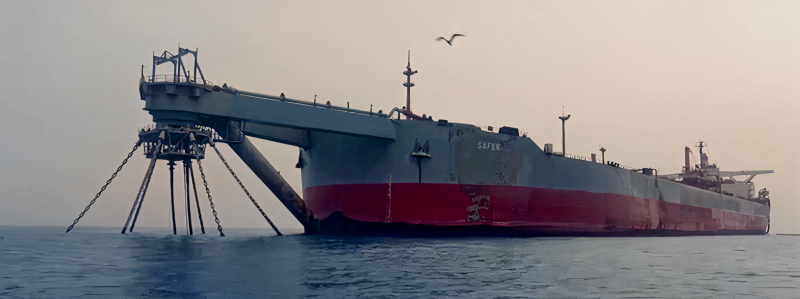
When oil or chemicals spill into coastal U.S. waters, the U.S. Coast Guard is the primary federal government agency charged with overseeing the response. To assist them, NOAA’s Office of Response and Restoration is mandated to provide science-based expertise to help them make informed decisions during these emergency operations.
OR&R’s spill response expertise is sometimes requested through State Department channels when oil spills or chemical accidents impact the shores of other countries. For example, in February 2022, OR&R scientists deployed to Peru to assist with a spill at an oil refinery on the coast of Callao; in June 2021, OR&R scientists provided remote support to the government of Sri Lanka following the fire and sinking of the container ship X-Press Pearl; and in July 2020, OR&R and other NOAA agencies provided remote support for the M/V Wakashio, which grounded and split apart off the coast of Mauritius, spilling tons of oil into the sea.
Environmental Threat off the Coast of Yemen
In July 2020, OR&R began providing technical support for an environmental and humanitarian threat in the Middle East—the floating storage and offloading facility (FSO) Safer (pronounced “saffer”). The decaying supertanker had been converted in 1987 to an FSO for oil, and is linked by pipeline to land-based oilfields. FSO Safer is moored about 4.8 nautical miles off the Red Sea coast of Yemen and holds an estimated 1.14 million barrels of light crude oil. Production, offloading, and maintenance operations on the Safer were suspended in 2015 because of the country’s civil war. As a result, the Safer’s structural integrity has significantly deteriorated and there is a risk that it could break apart, combust, or explode.
Within the international response community, many models have been run and reports written, including use of OR&R’s GNOME suite of spill trajectory and weathering tools—however, an important contribution to the mitigation effort was the analysis and interpretation of those results and reports.
OR&R staff supported the analysis of the threat posed by the Safer by interpreting the science behind the modeling, so that decision-makers could thoroughly understand the risks described in those reports. Staff provided a review and briefing on the FSO Safer modeling products, which was shared with the Department of State FSO Safer Working Group, the Yemen Affairs Unit, the United Nations, the Regional Organization for the Conservation of the Environment of the Red Sea and Gulf of Aden, and bilaterally with the Netherlands and United Kingdom. OR&R’s support to the Department of State in synthesizing the risk reports into meaningful decision-making information for the international committees was a critical component to prevent an environmental and humanitarian catastrophe.
The Potential Risks
Holding four times the amount of oil spilled by the Exxon Valdez—enough to make it the fifth largest oil spill from a tanker in history—a catastrophe with the Safer could have a devastating effect on marine life and marine-based economy in Yemen and nearby shores.
A massive spill from the Safer would destroy pristine reefs, coastal mangroves, and other sea life across the Red Sea, expose millions of people to highly polluted air, disrupt Yemen’s Red Sea fisheries, threaten the clean-water supply by contaminating the desalination plants that line the coast, and cut off food, fuel, and other life-saving supplies to Yemen, where 17 million people already need aid. Other countries bordering the Red Sea would also incur the burden of the spill with port closures and disruptions to desalination plants.
Urgent Action Needed
A spill from the Safer and its potentially disastrous impacts remain entirely preventable through offloading the oil. The United Nations has a plan to do this, but the emergency operation to transfer the oil to a safe vessel was delayed because of insufficient funding.
To help bridge the funding gap and start the operation, the U.N. began asking for contributions from members of the public in June 2022. Recently, the funding gap was closed for Phase I of the operation. Thanks to the mobilization and financial support of donor countries from the region and from all over the world, the mitigation operation is expected to start soon.
The U.N. operational plan involves: first transferring the oil into a safe vessel (Phase I), before installing a permanent storage solution and scrapping the Safer (Phase II). The U.N. will continue its efforts.
Investing in the International Community
While international support may not be OR&R’s primary mission, it is important as a preparedness activity to use these opportunities to exercise our expertise and maintain our readiness. A moderate investment of OR&R staff time contributed to multiple nations donating $72.6 million in order to start an international response operation.
As stated by international officials, "... we have a rare opportunity here, to tell a story not often told: the story of how we prevented a catastrophe.” OR&R will continue to support international efforts to prevent an environmental and humanitarian disaster, centered on the coast of a country already devastated by seven years of war.

